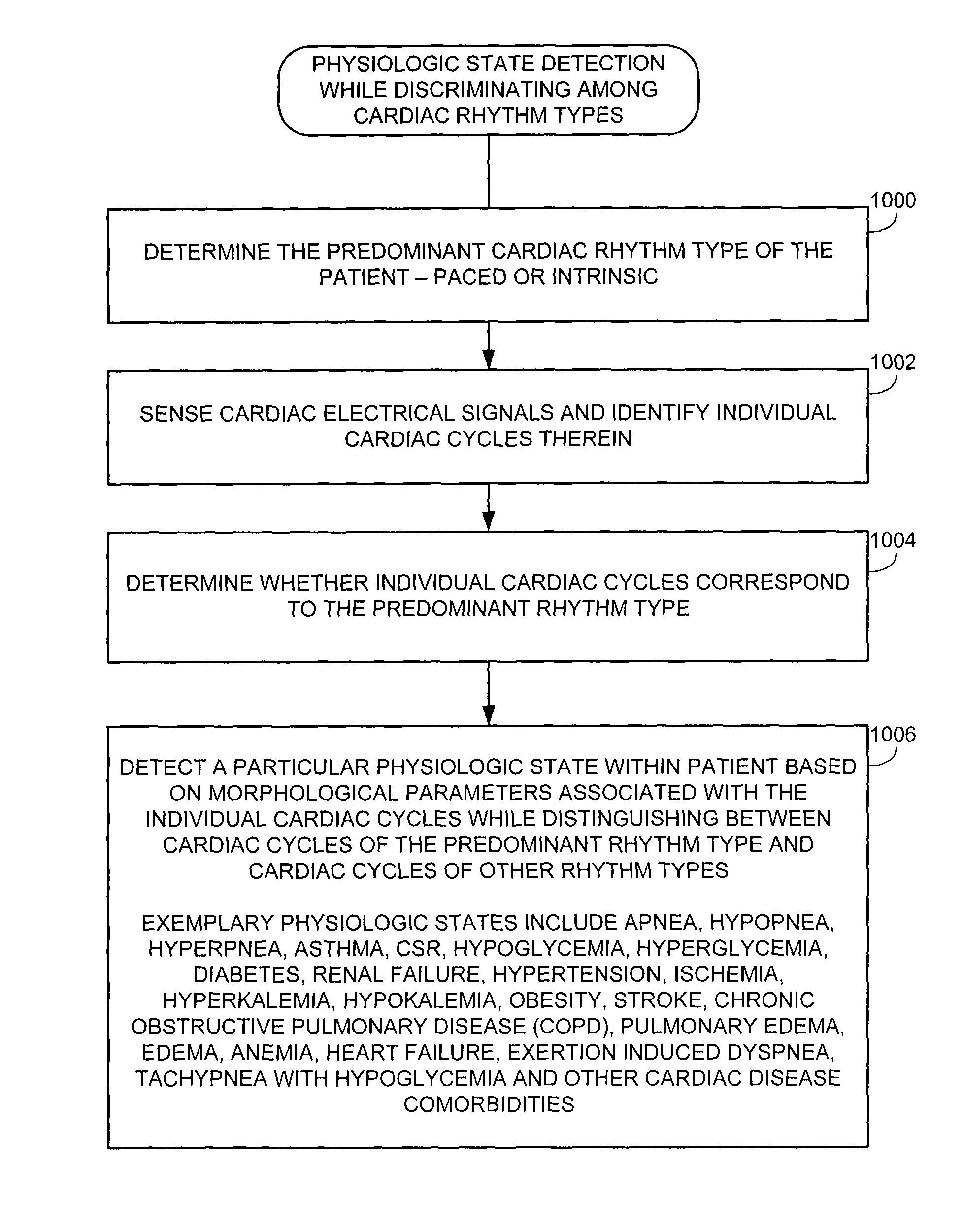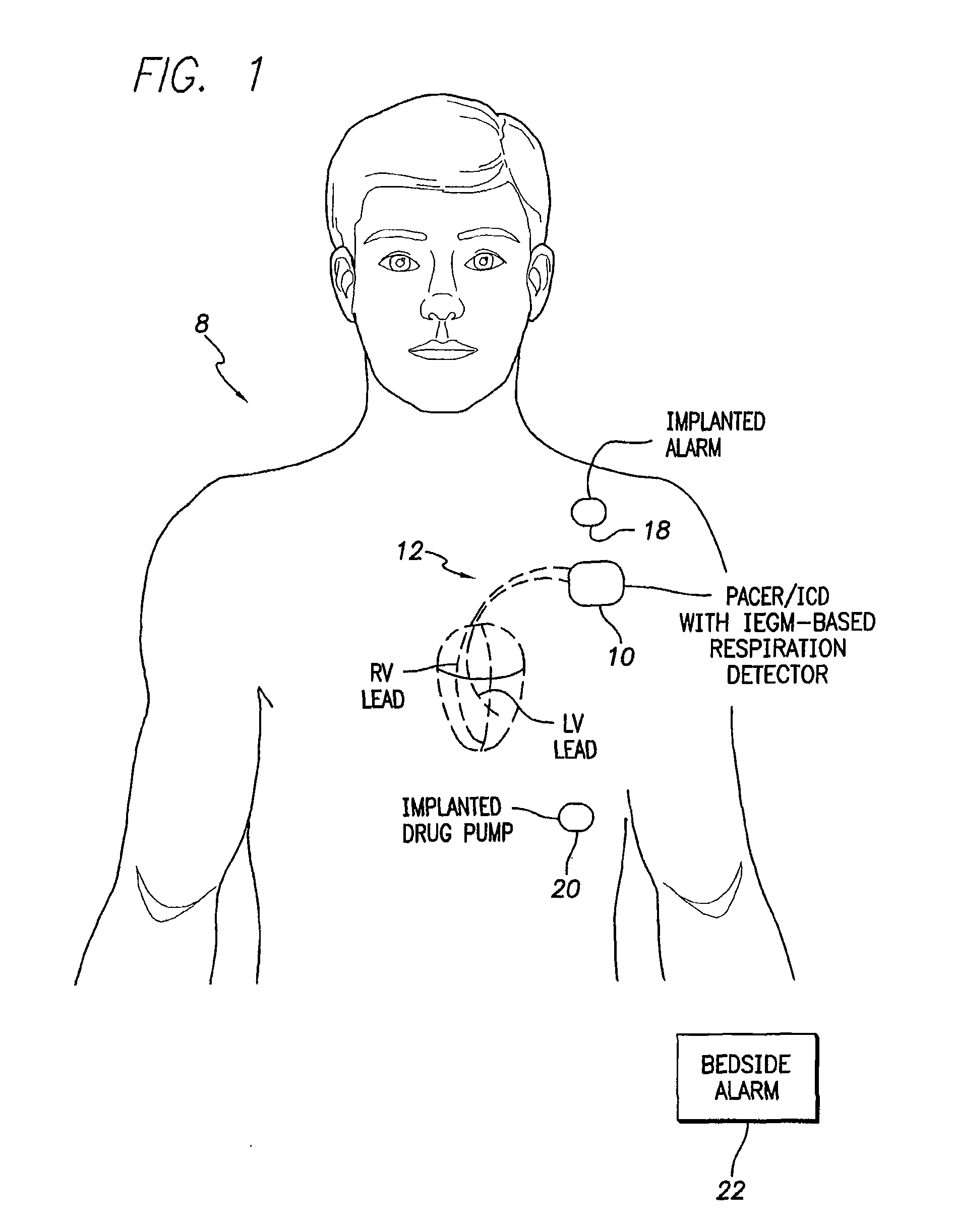System and method for detecting physiologic states based on intracardiac electrogram signals while distinguishing cardiac rhythm types
a technology of electrogram signal and physiologic state, applied in the field of implantable medical devices, can solve the problems of frequent wakefulness, aberrant blood chemistry level occurring during sleep apnea, and significant problems for patients with sleep apnea, and achieve the effect of improving the detection and discrimination of various physiologic states
- Summary
- Abstract
- Description
- Claims
- Application Information
AI Technical Summary
Benefits of technology
Problems solved by technology
Method used
Image
Examples
Embodiment Construction
[0054]The following description includes the best mode presently contemplated for practicing the invention. This description is not to be taken in a limiting sense but is made merely to describe general principles of the invention. The scope of the invention should be ascertained with reference to the issued claims. In the description of the invention that follows, like numerals or reference designators are used to refer to like parts or elements throughout.
Overview of Implantable Medical System
[0055]FIG. 1 illustrates an implantable medical system 8 having a pacer / ICD capable of tracking respiration based on IEGM signals, identifying episodes of abnormal respiration and delivering appropriate therapy. To this end, pacer / ICD 10 receives voltage signals from various cardiac pacing leads (only two of which are shown in the FIG. 1) from which various channels of IEGM signals are derived including, for example, unipolar or bipolar A-IEGM signals and unipolar or bipolar V-IEGM signals. A...
PUM
 Login to View More
Login to View More Abstract
Description
Claims
Application Information
 Login to View More
Login to View More - R&D
- Intellectual Property
- Life Sciences
- Materials
- Tech Scout
- Unparalleled Data Quality
- Higher Quality Content
- 60% Fewer Hallucinations
Browse by: Latest US Patents, China's latest patents, Technical Efficacy Thesaurus, Application Domain, Technology Topic, Popular Technical Reports.
© 2025 PatSnap. All rights reserved.Legal|Privacy policy|Modern Slavery Act Transparency Statement|Sitemap|About US| Contact US: help@patsnap.com



